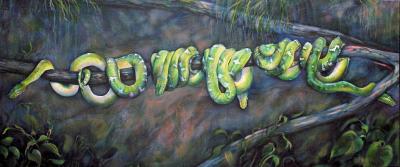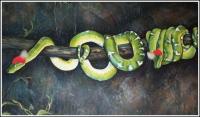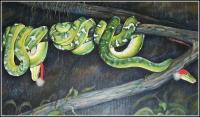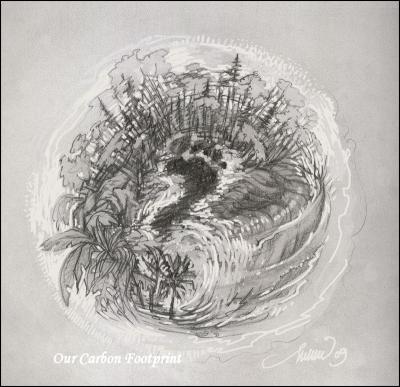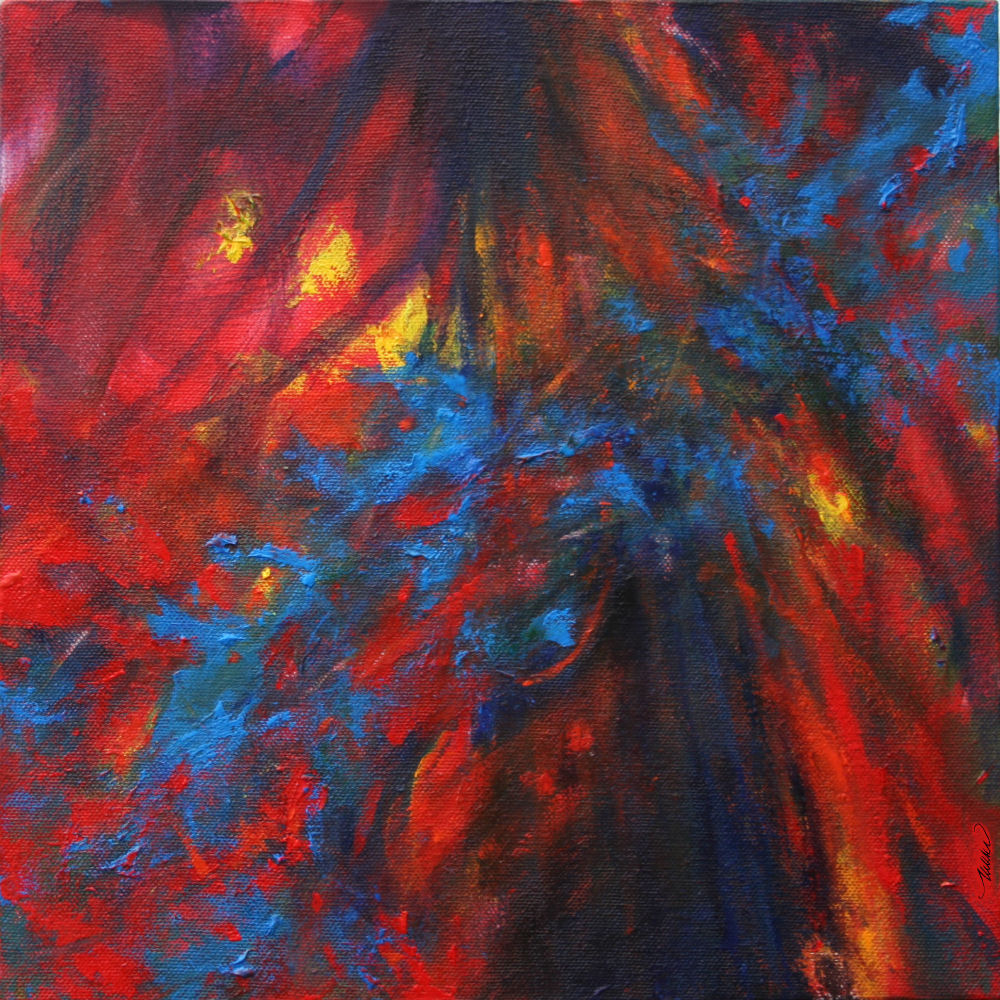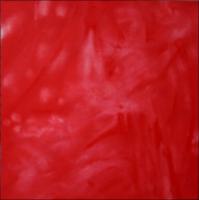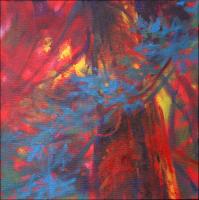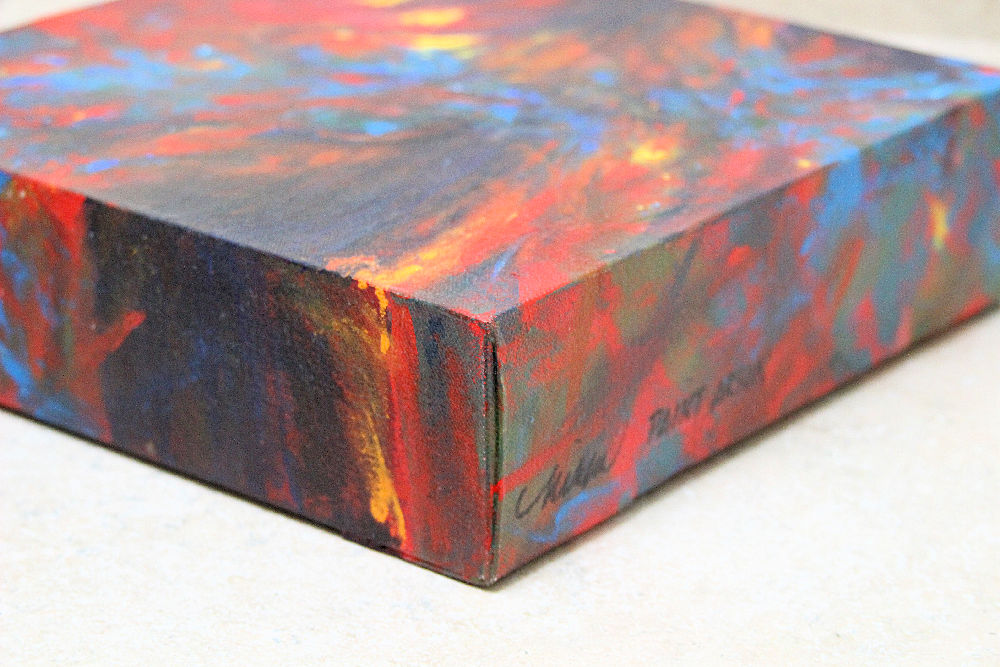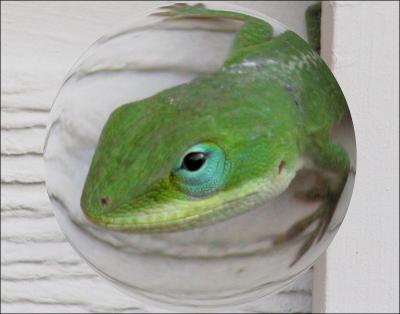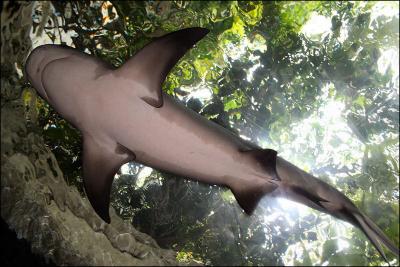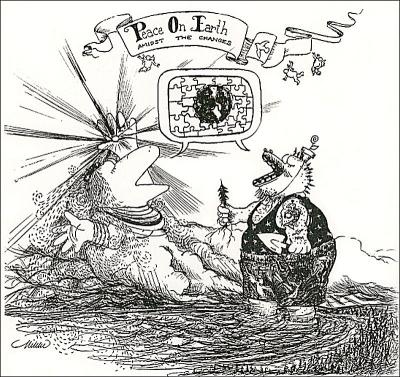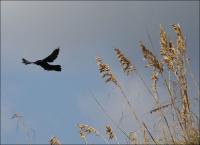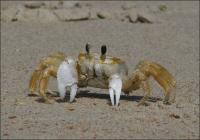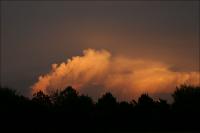Environmental issues
Next Entries »Perpetual painting
Monday, October 5th, 2009
Like music
where silence between the notes sets the rhythm,
not painting is half the work.
 For all artists, the most mysterious question of all might be “is it finished?” , but for the sake of clarity and the examples here I’ll just refer to painters. One popular opinion is that the best painting is one that’s finished quickly; one that retains the artist’s first fresh impressions, otherwise it should be painted over or tossed in the garbage and a new one started immediately. There are solid reasons for not lingering too long on a painting, but in matters of the Art I’m always suspicious when I hear the word should being used in a sentence containing advice. Some art rumors are accepted as absolute when they could stand some explanation. It can be confusing enough for the experienced, but especially for beginners looking for ground rules and a map to follow.
For all artists, the most mysterious question of all might be “is it finished?” , but for the sake of clarity and the examples here I’ll just refer to painters. One popular opinion is that the best painting is one that’s finished quickly; one that retains the artist’s first fresh impressions, otherwise it should be painted over or tossed in the garbage and a new one started immediately. There are solid reasons for not lingering too long on a painting, but in matters of the Art I’m always suspicious when I hear the word should being used in a sentence containing advice. Some art rumors are accepted as absolute when they could stand some explanation. It can be confusing enough for the experienced, but especially for beginners looking for ground rules and a map to follow.
In Art though, for every should there is another option. The same suggestions don’t work for everyone. Have you ever felt guilty or embarrassed – even ashamed – because you took a painting too far? I have, but it’s only when I’ve compared my work and methods to others’ judgment that I should’ve quit while I was ahead…and guilt has no business hanging around in our daily work if it isn’t useful! Frustration can be an excellent motivator if it’s allowed to be.
If it’s going to make sense – not exclusively the sole intention – every painting reaches stages where we need to make the call to leave it alone and say it’s finished, or proceed; stages where placing one more mark means the entire painting has to change and be brought up to par around it. If things that need correcting are not dealt with honestly, the work will not be as successful as it could be. There are phases in each painting that are truly intimidating, when painting is anything but leisurely; when we’re faced with: do we climb that mountain or not?
A lot of Plein Aire artists swear that their methods of painting outdoors on-site produce the highest quality work. The limitations of sunlight, location, outdoor temperatures and so on, mean that to finish successfully they need to splash down a lot of information within a short period of time. Doing so, when the thinking brain is disengaged and just responding to the subject, a lot of amazing unintentional surprises show up in the painting. Spontaneity and spurts of enthusiasm for being fully in the present tense can bring great results that need no further efforts at the end of the day. Plein Aire artists are in a field of their own (literally too!).
It’s a curious thing how creativity warps and reforms into amazing things when pressure is applied. Many people who aren’t artists will agree that the greatest ideas can occur when under pressure to produce them. For those who have orders to complete, at its best the challenge is like a beautiful sort of panic, where there’s an understanding of the time restrictions while fully trusting that whatever needs to happen is going to be successful. The abilities are less trustworthy when the pace and demand for finished work increases, time allotted decreases and the quality of the product diminishes. If this imbalance continues over extended periods of time, like years, sloppy and care-less habits take hold too easily. If there is work that must be accomplished though, these things can be controlled to some extent –this is one benefit of pushing personal boundaries: it puts tenacity to practice – but creativity is fickle and that’s a fact.
What has all that got to do with the question about finishing? The best paintings are not necessarily those that are finished in a few hours or a day. There are other purposes for painting besides finishing it to admire, be admired or to sell. Nothing replenishes the quality of our creative energy like being lost in the timeless, pure enjoyment of study and detail for no reason in particular. “The Zone” is like an addiction where the high is fairly elusive but we’re compelled compulsively to track it down again and again, discovering and rediscovering the source of it all. One painting could be someone’s lifetime of work.
I’m saying that if you personally feel you’d like to keep going with a painting for days or years… or never finish, then you ought to follow your own intuition about it. I’m not saying you should. I just recommend considering what other artists say, but also consider each painting as a new experience with new rules, new goals and new circumstances.
Experience, masterpiece to failure, will always apply to future work somehow. That’s the great thing about painting: no time spent searching for answers is ever wasted. It’s all recyclable material! Every decision about finishing – or not – is relative to individuality, and relative to each new painting as it develops your way.
Pushing the boundaries
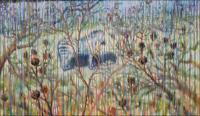 Myrtle At The Zoo, first version, Phase 18, unfinished – Crepe Myrtle branches and seedpods – 20 x 34 x 2 inches acrylics on canvas, gallery wrapped.
Myrtle At The Zoo, first version, Phase 18, unfinished – Crepe Myrtle branches and seedpods – 20 x 34 x 2 inches acrylics on canvas, gallery wrapped.
Work daily March 10th through April 2nd, 2008:
Finished for now…this one needs a rest, and I may or may not return to it. Regardless, I’ve learned a lot ad enjoyed playing with different ideas. It’s been interesting teetering back and forth between frustration and fun, but sometimes that’s what painting is all about. There’s been such a tension over this one as with no other painting, where the urge to throw it away is pitted against the determination to see what could happen. I still like a lot of things in it, such as the technique of dripping paint down the front that I’ve tried in previous paintings. Dripping re-energized the painting and me, and took the work in unexpected directions.
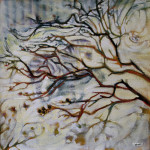 Myrtle At The Zoo, 2nd version – 11 x 11 x 3 inches acrylics on canvas, gallery wrapped sides painted. Many of the issues were worked through on the previous larger version, and I’m pleased with this boxy little painting…still not completely satisfied that I’m finished with this subject because it’s so complex, and it’s like a puzzle that’s nagging at me to figure out, so will probably attempt this same painting at least one more time.
Myrtle At The Zoo, 2nd version – 11 x 11 x 3 inches acrylics on canvas, gallery wrapped sides painted. Many of the issues were worked through on the previous larger version, and I’m pleased with this boxy little painting…still not completely satisfied that I’m finished with this subject because it’s so complex, and it’s like a puzzle that’s nagging at me to figure out, so will probably attempt this same painting at least one more time.
Perpetual painting
Painting animals with distinct and specific characteristics calls for a different approach from start to finish, for example, compared to generic landscapes. The boas are one of my favorite exhibits at the Dallas World Aquarium, downtown Dallas, Texas. The phosphorescent green skin has striking black and white scale patterns along the spine and a turquoise mother-of-pearl overall sheen that’s most visible at certain angles where the body delicately curls and bends, so this painting accumulates finer detail than is typical of my work, except in graphite illustrations.
Emerald Tree Boas, 24 x 57 x 2 inches acrylics on canvas, wrapped sides painted (August, 2005 – ? )
As shown in the thumbnail above, there are only a few small things left to do, a little on the skin then some barely visible brushstrokes in the background like ones that were there in earlier phases, thumbnail…so it really is just about finished, but I’m not in any hurry. Of course I’ll stop in my tracks if you want to buy it!
I like having one painting around that’s going to get the full treatment! Emerald Tree Boas has become like an old friend, even hanging out celebrating holidays in the dining room with the rest of us. It would be nice if this painting could carry enough potency to alter the automatic responses of fear and disgust that are associated with snakes. It just occurred to me that it might be fun to offer the buyer an assortment of hats and hearts and ribbons for different occasions. Where I used tape, instead I’d put magnets on the back and magnets on all the little hats and accessories. It’s a little nutty maybe, but it also opens up the target market a little doesn’t it!
Nature is perfectly imperfect. I paint with acrylics, so if the surface is washed back and scrubbed regularly in areas that need change. Scrubbing paint away with a pot scrubber or wet cloth used to remove paint helps texturize, give atmosphere, and also ensure that paint won’t cake up in areas, unless that’s the intention. More debates about spending too long on a painting are that it stiffens the whole look and feel because 1) it tidies things up too much, and 2) due to the plastic properties of acrylics, if they are allowed to pile up they will harden and shine, no longer catching the tooth of the canvas.
These are all things that can also be used to advantage though. In sports you need to know your opponent… well the same is true here. You can use the buildup to create the effects it produces if that’s what you want to achieve. To keep the canvas texture for as long as possible, paint diluted with gels or water is perfect to start, then as confidence builds, so can your applications of paint. My philosophy is that if things need to change they do, until the word “finished” is loud and clear.
…practice and even failure can be applied to future work…
Our Carbon Footprint
Wednesday, April 8th, 2009
Our Carbon Footprint, graphite on paper, scanned, digital pen
Creativity is above all our best resource to finding and maintaining improved solutions with regard to our impact as consumers on the earth. Our carbon footprint is worthy.
The Majesty of Trees Exhibition was just accepted to show at the University of Wisconsin-Madison Arboretum in the Steinhauer Trust Gallery during May and June, 2010.
Paint Arson
Thursday, March 26th, 2009
Paint Arson, 11H x 11W x 3D inches acrylics on canvas, wrapped sides painted.
Frame unnecessary. Hang on a wall or display on a flat surface. Signed on the side so as not to impose on the composition.
Progress and process phases 1 and 2 images.
Painting, whatever the subject may be, is a journey through all kinds of unanticipated thoughts and associations; some are short and sweet, ending within 1 – 6 hours and not much more than a visual, but some are packed full of adventure that isn’t even realized until surfacing from a few hours of work.
A new jar of Cadmium Red medium hue was just the thing to reboot, then re-route some old habits I was falling back into, like over-working paintings. Trying a new color invigorates the work process like nothing else can, adding certain life to the results as well. Incorporated as a base, straight out of the tube or mixed with your usual palette, a new color can change everything.
Every day is Earth Day
Tuesday, April 22nd, 2008
Caring. It’s that simple.
For facts about Green Anoles and other reptile care and conservation: http://nationalzoo.si.edu/Animals/ReptilesAmphibians/Facts/FactSheets/Anole.cfm
The changing state of the oceans
Tuesday, April 15th, 2008
Bull Sharks swim overhead in a 40 foot long tunnel in the main floor Mundo Maya exhibit at the Dallas World Aquarium.
Environmental issues are emotional issues. Groups like Greenpeace work aggressively to protect the future of our planet. It’s one way to get the point across, but if we’re talking about changing the habits of the masses, I believe a more gentle approach is more effective. As one who was most assertively involved promoting care for the planet about 20 years ago when developing and selling Original Earthbags, first-hand public reactions and feedback demonstrated that negativity toward the human species does not inspire or motivate some of us to take action; in fact it can even be detrimental to the cause.
There are small things each of us can contribute at any level, habit and practices which, by now most of us are aware of. Zoos, major city aquariums, botanical gardens and similar public spaces naturally affect an awareness of ourselves in relation to Earth and her creatures in a way that permanently affects our perception of life in general. We start incorporating more mindful habits because we want to, not because we are being told we should.
For information about the changing state of the oceans, here is a link to a petition gathering support to increase marine reserves.
Peace On Earth
Tuesday, December 11th, 2007
Peace On Earth, pen on paper.
North Carolina
Monday, October 1st, 2007
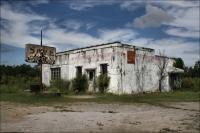 Alain and I flew to North Carolina for three days ( a little business trip and I tagged along—he threatened to take my camera with him and I was sure I could not manage without it!) We drove around the eastern countryside between Raleigh and Washington (NC) through old, old towns (it takes a looong time for wooden doors to shred, and a looong time for conditions to be just right for vines to sprout then twirl round and round, entwined and squished between panes of glass!) …old, old farms: tobacco, cotton, peanuts.. and an interesting gas station.
Alain and I flew to North Carolina for three days ( a little business trip and I tagged along—he threatened to take my camera with him and I was sure I could not manage without it!) We drove around the eastern countryside between Raleigh and Washington (NC) through old, old towns (it takes a looong time for wooden doors to shred, and a looong time for conditions to be just right for vines to sprout then twirl round and round, entwined and squished between panes of glass!) …old, old farms: tobacco, cotton, peanuts.. and an interesting gas station.
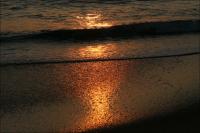 There is a lot of history in NC – fossil, human/settlers and Civil War history. We stayed at Kitty Hawk (first flight – Wright bros.) and walked the shores at various places along the narrow coast of the Outer Banks. We watched the sun rise and dolphins feed – too far away for good photos, even with the telephoto. As soon as the sun rose they swam away.
There is a lot of history in NC – fossil, human/settlers and Civil War history. We stayed at Kitty Hawk (first flight – Wright bros.) and walked the shores at various places along the narrow coast of the Outer Banks. We watched the sun rise and dolphins feed – too far away for good photos, even with the telephoto. As soon as the sun rose they swam away.
Along Cape Hatteras, groups of Grackles ate ripe grass seeds, bouncing up and down on the stems, their bodies too heavy for the tall grasses.
On Pony Island a large sand crab tried to buff up and look tough, but it was quite vulnerable there out in the open; all the other crabs scurried into holes but this one stayed, trying to hide in footprints, which offered no protection if we had been birds looking for a hearty meal.
Great fun to watch the behavior for a while. It’s clearly outlined crab-shaped shadow following it everywhere, creating a few graphic photos that are perfect resource material for drawings and paintings but do not stand alone as good photography because it was moving so fast.
Just off the 2 1/2 hr. long ferry at Swan Quarter, and sunset with a short, wide rainbow after a storm that we managed to escape and watch from the better side.
NO OLF – we were curious about this sign in many people’s yards. The following website shows a video describing how the U.S. Navy has purchased over 30,000 acres of land near the eastern North Carolina coast, planning to move their pilot training program from Virginia.
Part of the huge controversy is that over 75 families would be forced to leave their homes, many of them farming that land for generations. The human issues are enough, but the cause and effect on the wildlife and ecology would be drastic and irreparable. Thousands of ducks and large flocks of snow geese that feed in the area annually would no longer have sanctuary. The large birds would also be a danger to the jets.
http://www.youtube.com/watch?v=3XDmC1LD1Kc
Next Entries »





